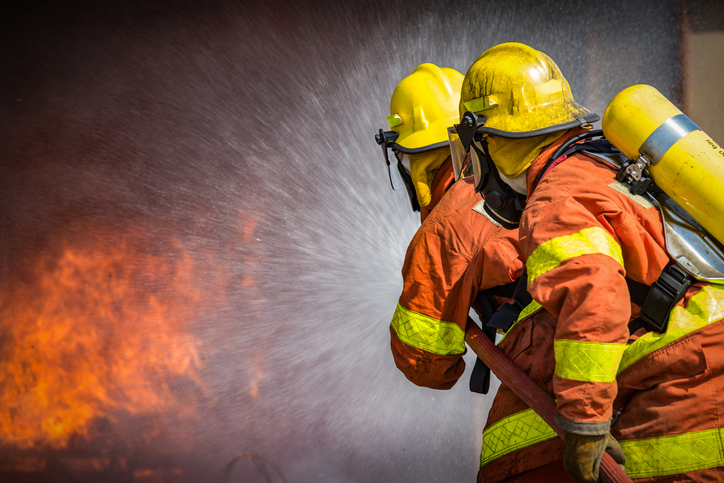Raleigh, NC: (919) 277-9299

AFFF exposure puts many first responders at an increased risk even when wearing firefighting gear. Had firefighters known the facts about aqueous film-forming foam (AFFF) containing harmful per- and polyfluoroalkyl substances known as PFAS, many hardships could have been prevented. Instead, the turnout gear and procedural training that is supposed to protect firefighters from harm became additional sources of hazards.
AFFF Exposure During Firefighting Training
Live-fire training is an essential component for firefighters learning extinguishing tactics. This training builds decision-making skills for high-risk situations like structural fires and plane crashes. Since firefighters are called to half as many fires today as they were in the 1980s, trainees have fewer opportunities for firsthand experience, in turn making the need greater for manufactured response situations.
When fire casualties and injuries rise, training is the first factor to be analyzed, and the demand for it usually increases. Since the real impact of AFFF on the environment and public health was concealed by manufacturers, fire academies continued using fluorine surfactants in training until only recently. This negligence left trainees, seasoned firefighters, and instructors subject to sickness and diseases due to interactions with dangerous suppressants.
Despite the Department of Defense’s 2011 recommendation for training programs to use non-fluorosurfactant foams, these substances continued to be permitted for instructional use until their ban in 2021. The number of firefighters exposed during training (and throughout their firefighting careers) is vast, but these trainee numbers can give us some idea of the scope:
- Goodfellow Air Force Base graduates approximately 2,400 joint service students per year from the Louis F. Garland Department of Defense Fire Academy.
- The Navy employs 3,300 Damage Controlmen, who act as Fire Marshals and lead firefighting on ships where activating and maintaining AFFF stations are core tasks.
- The National Fire Academy State Training program graduated more than 98,000 students in various fire-related programs in a single fiscal year.
- More than 27,000 fire departments (with more than 1 million active fire personnel) are listed in the U.S. Fire Administration’s National Fire Department voluntary registry.
Exposure to AFFF From Turnout Gear
Many first responders don’t realize that AFFF exposure risks for firefighters persist long after leaving the site of the discharge. Turnout gear worn for personal protection from fire hazards and suppressant chemicals transports foam residue—and hazardous PFAS—to firehouses and homes. This equipment earned the name ‘bunker gear’ because it was often stored in the bunk room of a fire department where firemen sleep, affording workers little separation from contaminated pants, boots, and helmets.
Clothing was often hosed off rather than machine washed, and firefighters didn’t think twice about bringing personal gear home or hanging it in common areas. As chemical hazards became known, decontamination practices improved. Recommendations by the NFPA and other agencies provide guidelines for cleaning gear, but for too many firefighters, these sterilization practices came too late.
Thanks to case studies linking PFAS to cancer, medical professionals and advocates for firefighters have begun to connect the dots between failing health and these occupational hazards. For first responders and military members with known PFAS exposure, health monitoring can help with disease prevention and early detection, but AFFF lawsuits may be the only way to make manufacturers own up to their negligence.
